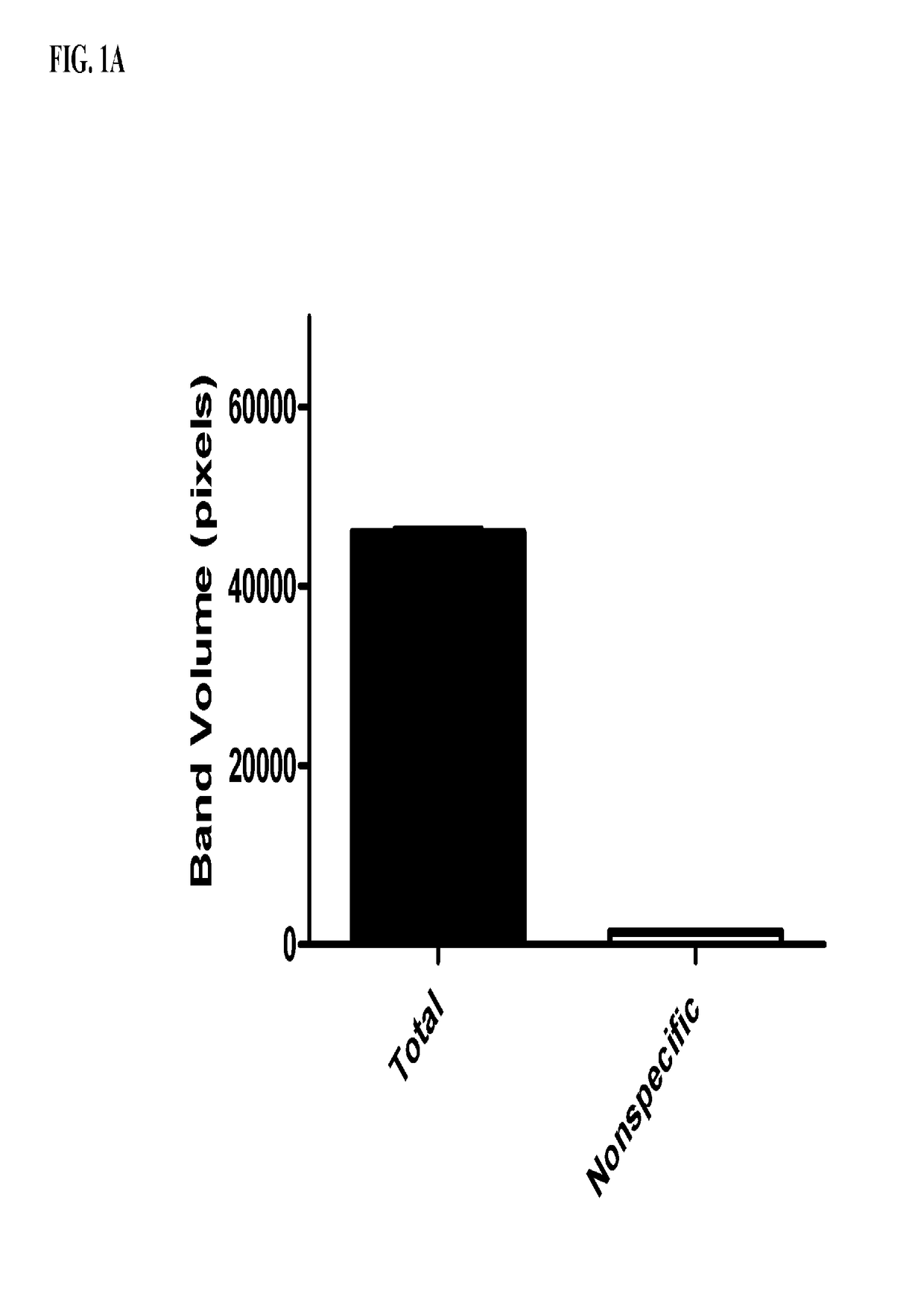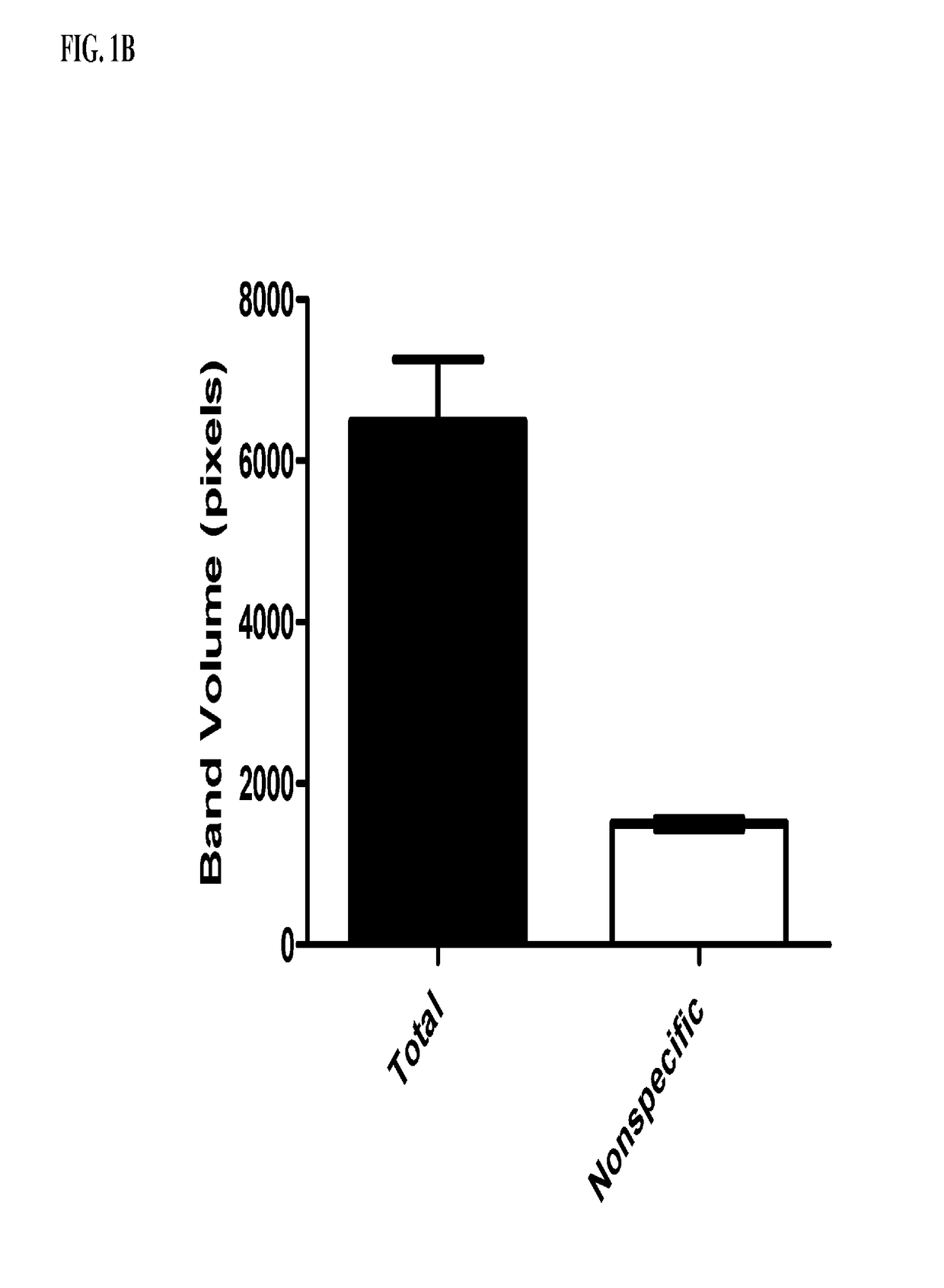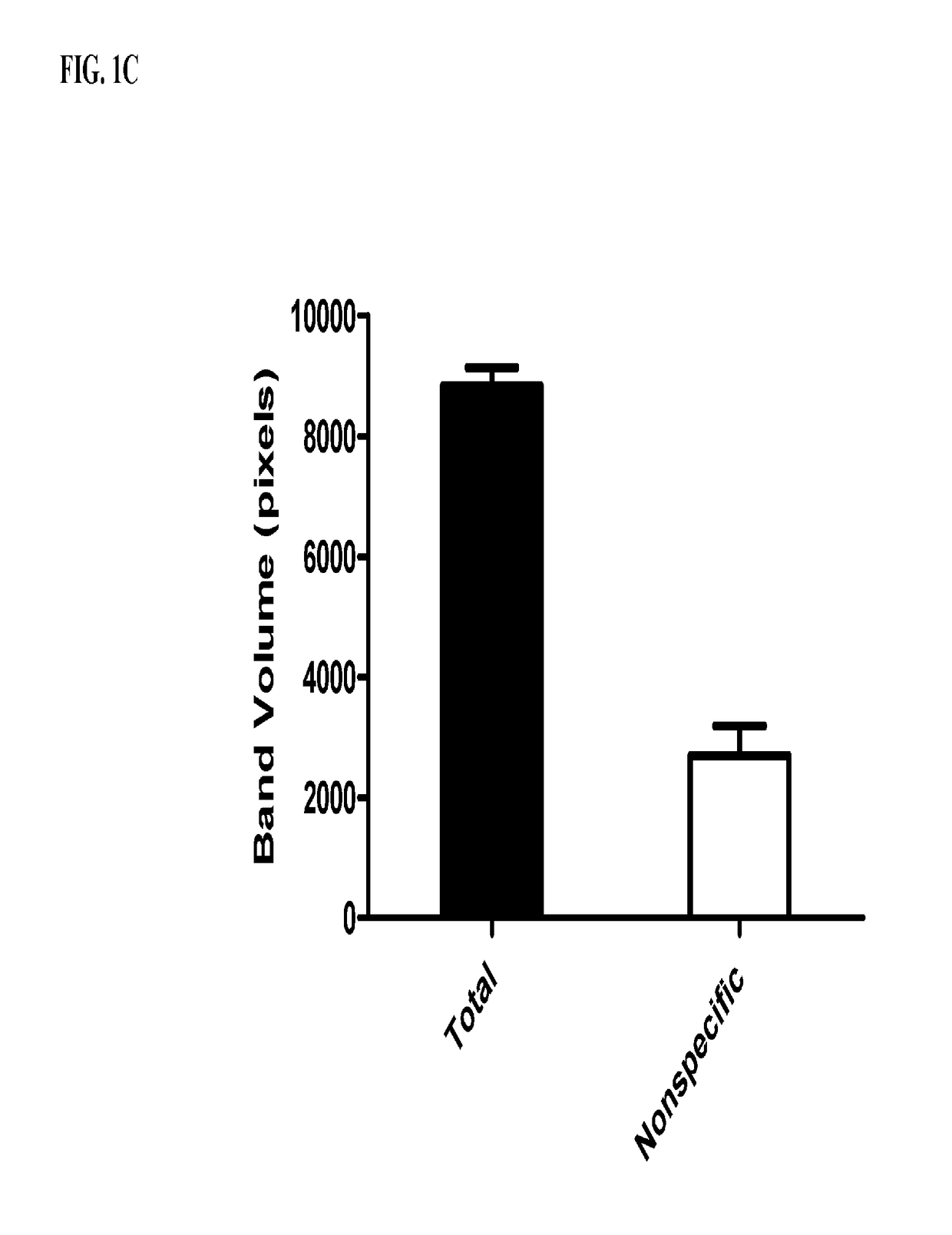Novel bt toxin receptors and methods of use
a technology of bt toxin and receptor, which is applied in the field of manipulation of bt toxin susceptibility, can solve the problems of affecting the economic viability of agricultural producers, armyworm feeding, black cutworm damage, etc., and achieves the cost of damage control and a billion dollars a year
- Summary
- Abstract
- Description
- Claims
- Application Information
AI Technical Summary
Benefits of technology
Problems solved by technology
Method used
Image
Examples
example 1
Specific Binding of Bt Toxin to Lepidopteran Insects
[0142]Midguts from fourth instar Helicoverpa zea, Ostrinia nubilalis, Spodoptera frugiperda, and Chrysodeixis includens larvae were isolated for brush border membrane vesicle (BBMV) preparation using the protocol by Wolfersberger et al. (1987) Comp. Biochem. Physiol. 86A:301-308. An in-solution competitive binding assay was performed using 40 μg (protein content) of BBMVs from H. zea (corn earworm) and O. nubilalis and 10 nM IP2.127 (SEQ ID NO: 21) labeled with Alexa-488 fluorescence molecule to measure specific binding of IP2.127 to H. zea or O. nubilalis. An in-solution competitive binding assay was performed using 20 μg (protein content) of BBMVs from S. frugiperda (fall armyworm) and 10 nM IP2.127 labeled with Alexa-488 fluorescence molecule to measure specific binding of IP 2.127 to S. frugiperda. Binding buffer used for IP2.127 binding was a sodium carbonate buffer consisting of 50 mM sodium carbonate / HCl pH 9.6, 150 mM NaCl,...
example 2
Isolation of Lepidopteran Bt Toxin Receptor
[0143]A solution binding assay was done using H. zea BBMVs with biotin labeled IP2.127 (SEQ ID NO: 21). The binding assay was followed by the detergent (Triton X100®) extraction of proteins from BBMVs bound to the biotin-labeled IP2.127. The proteins bound to biotin labeled IP2.127 were then “co-precipitated” (co-isolated) using Dynabeads® MyOne™ Streptavidin T1 (Life Technologies # 65601) which binds the biotin-labeled IP2.127 and proteins bound to biotin labeled IP2.127 while unbound proteins are washed away. The samples are then separated by SDS-PAGE and stained to visualize protein bands. FIG. 2A shows the gel of the isolated proteins with an arrow indicating to the unique protein that was selected for mass spectrometry in H. zea.
[0144]Solution binding assays were done using one of each of O. nubilalis, S. frugiperda, or C. includens BBMVs with IP2.127. The binding assays were followed by the detergent (Triton X100®) extraction of prot...
PUM
| Property | Measurement | Unit |
|---|---|---|
| Fraction | aaaaa | aaaaa |
Abstract
Description
Claims
Application Information
 Login to View More
Login to View More - R&D
- Intellectual Property
- Life Sciences
- Materials
- Tech Scout
- Unparalleled Data Quality
- Higher Quality Content
- 60% Fewer Hallucinations
Browse by: Latest US Patents, China's latest patents, Technical Efficacy Thesaurus, Application Domain, Technology Topic, Popular Technical Reports.
© 2025 PatSnap. All rights reserved.Legal|Privacy policy|Modern Slavery Act Transparency Statement|Sitemap|About US| Contact US: help@patsnap.com



